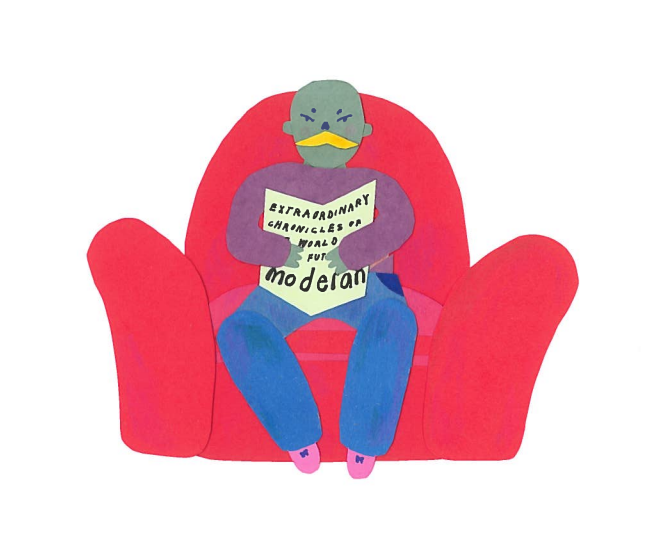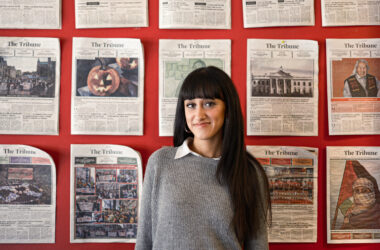It is a cold and wintery night as my dad and I dart into Saint-Laurent’s Mainline Theatre. We trudge up the narrow steps and slide into the foyer, just in time for the show.
That night’s act was organized by the Confabulations, a Montreal-based storytelling collective. I always look forward to their shows; each night features a cohort of performers who, deprived of props, photos, and gimmicks, are forced to manipulate their tone, gaze, and posture to tell stories. With an abundance of online ways to share ideas in my day-to-day life, I find this intense focus on the simple qualities of communication empowering. Through a series of workshops and mentorship sessions, storytellers craft their narratives in preparation for five minutes with the microphone, speaking to a crowd of half-lit faces.
The audience squeezes into the box theatre, the lights dim, and the stories begin. Over the course of the next two hours, we are treated to the beautiful voices and experiences of doctors, photographers, and artists. Guided by the narrators, we explore the thematic consequences of owning goldfish, the pressures of being an astrophysicist, and the lessons learned from losing a family restaurant. Speakers share moments of vulnerability and growth while engaging their audience, carefully choosing silence, intonations, and gestures to convince and persuade. Meanwhile, the listeners expend no energy delivering comforting remarks, retorts, or anecdotes, but instead give our undivided attention to the voice in front of us.
These storytelling events are a reminder that, in the digital age, I can still connect with the strangers around me—even if only for a few moments.
These public events are not the staples of communication that they once were. The modern story has to be prepared with a delicate palette. At conception, it must be determined whether an idea can be enjoyed in 280 characters or less. When sharing a picture, an appropriate seasoning of filters and fonts should be considered: Or perhaps, if feeling more minimalist, it might be preferable to omit such garnishes, allowing raw pixels to cut the glitz and glamour of the Instagram landscape. Only a daring few messages will make it to my Facebook wall, before which they will have undergone meticulous inspection. I will agonize over the hints of candour, humour, and emoji-infused je ne sais quoi before posting. Often times, my message becomes so tied up with its medium that it is hard to distinguish between the two. It will become a ‘Facebook post’ or an ‘Instagram story’ before anything else.
Unbothered by these details, storytelling nights provide a setting for people to both share and empathize with themes that are inherently ill-suited to other platforms.
From an early age, I was warned about sharing personal information online. My family explained to me that anything I type, text, or photograph will burden me forever. Since then, I have developed a stronger connection to my virtual identity, but the threat of irreparable damage prevents me from sharing moments of growth that are less aesthetically pleasing than travel photos.
With storytelling, neither the teller nor the audience faces the consequences of eternal regret, yet the story lives on after the show.
Ultimately, the imperfections of modern communication are a good thing. Instagram may never be able to simulate the warmth of the Mainline Theatre, and I can not enjoy a blackbox performance while waiting in line at the Burnside Soupe Café, but I think the world is a better place because of it.








